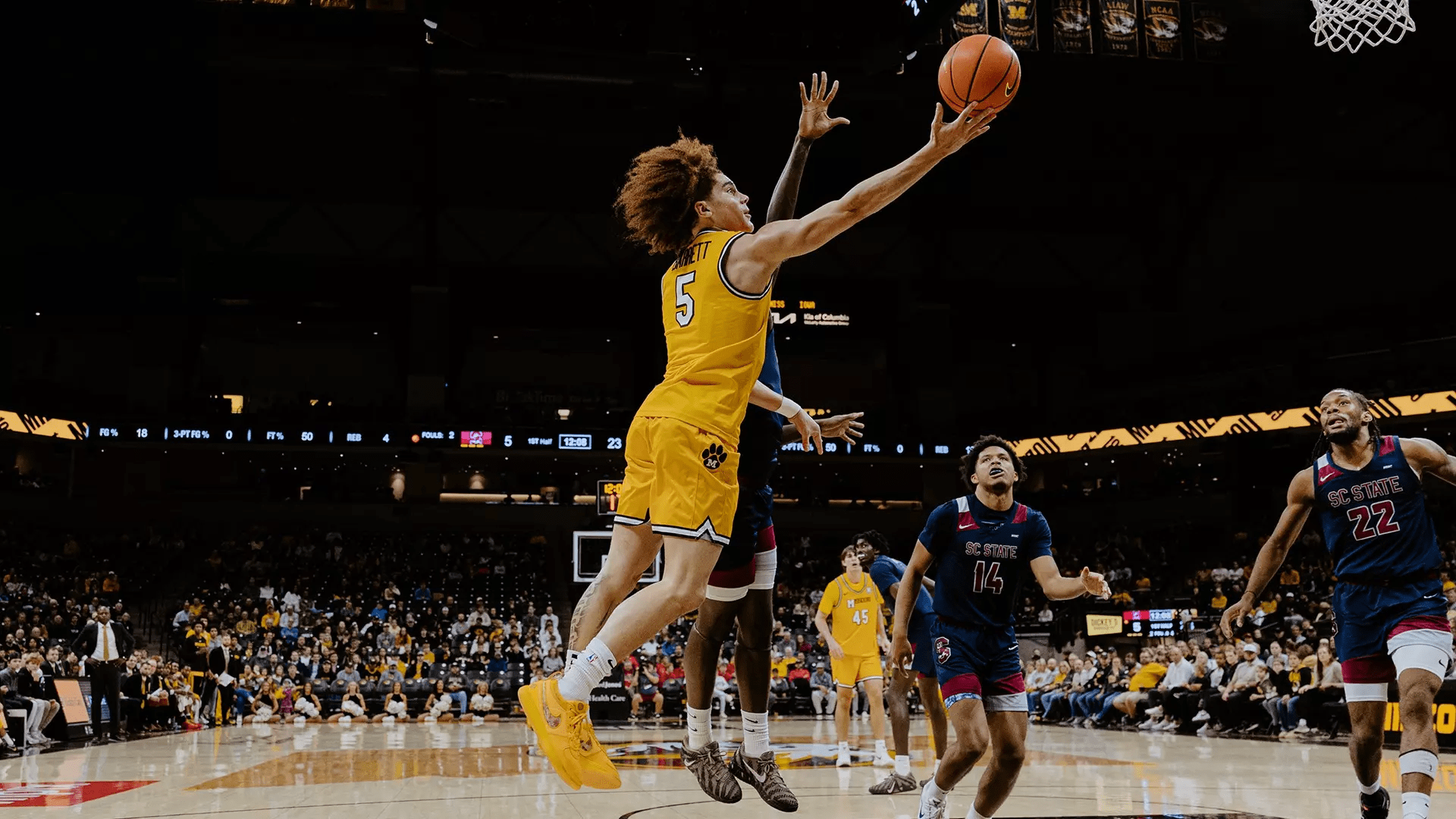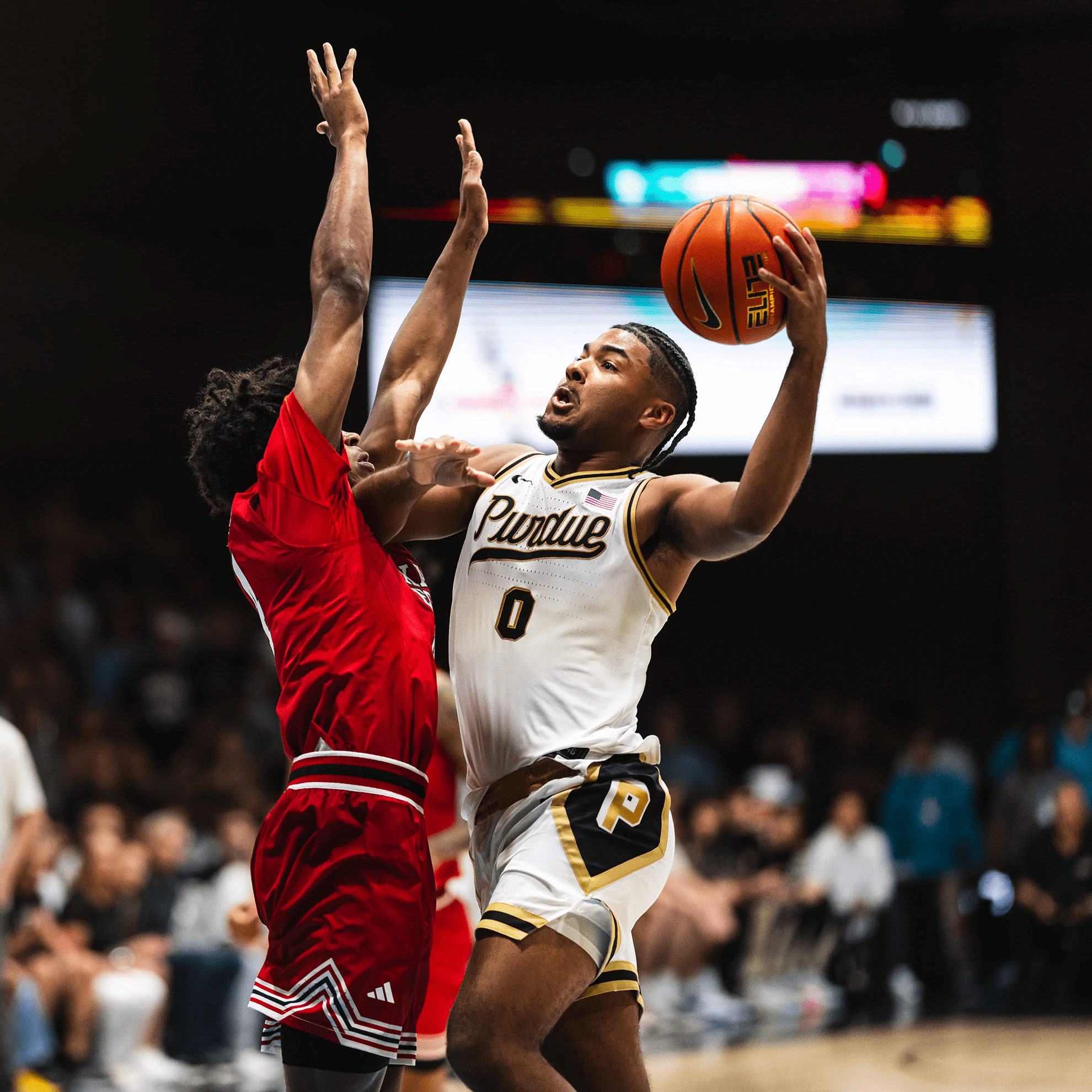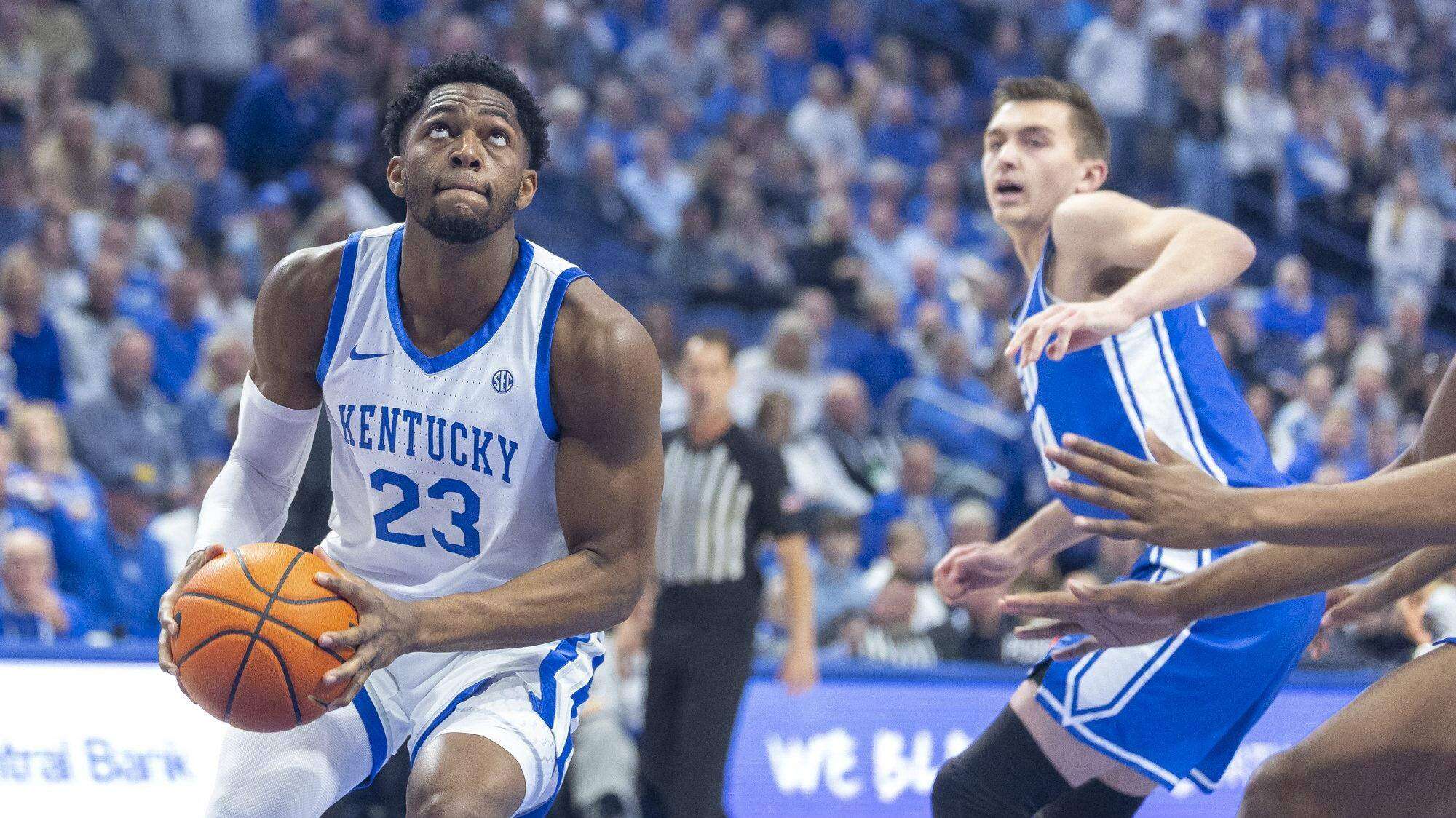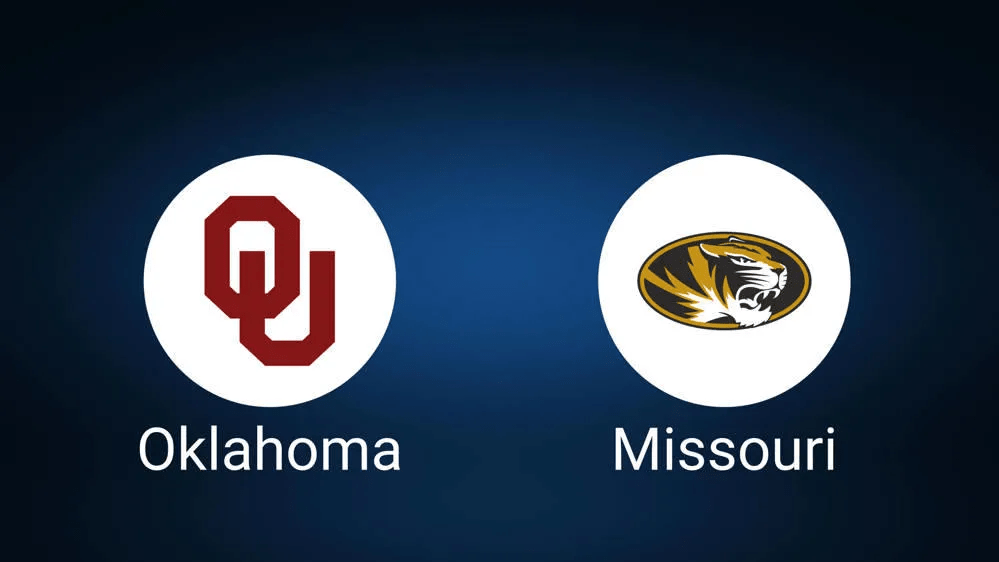Alabama A&M Bulldogs vs Clemson Tigers Advanced Game Analysis
Alabama A&M Bulldogs vs Clemson Tigers Advanced Game Analysis – NCAA Basketball Nov.28, 2025 at 7:00pm ET Matchup Preview
Alabama A&M Bulldogs vs Clemson Tigers Advanced Game Analysis – NCAA Basketball Nov.28, 2025 at 7:00pm ET
Matchup Preview Table
| Team | Record | Points Per Game | Opponent Points Per Game | Avg Score Margin | Total Rebounds Per Game | Assists Per Game | Assists / Turnover | Effective FG% |
|---|---|---|---|---|---|---|---|---|
| Alabama A&M Bulldogs | 3-1 | 64.3 (#329) | 75.7 (#185) | -11.3 (#283) | 30.0 (#332) | 10.3 (#325) | 0.816 (#292) | 44.7% (#320) |
| Clemson Tigers | 6-1 | 84.3 (#69) | 64.9 (#29) | +19.4 (#25) | 42.1 (#24) | 16.1 (#85) | 1.852 (#19) | 53.7% (#109) |
Quick Glance Summary Card
Game Snapshot ============================================ Macro Profile - Alabama A&M: 3-1, 64.3 PPG (#329), -11.3 margin (#283) - Clemson: 6-1, 84.3 PPG (#69), +19.4 margin (#25) 🔥 Offense Alabama A&M ███░░░░░░░░░░ 64.3 PPG (#329) Clemson ████████████░🔥 84.3 PPG (#69) Defense (Points Allowed) Alabama A&M ███░░░░░░░░░░ 75.7 Opp PPG (#185) Clemson █████████████░ 64.9 Opp PPG (#29) ✅ Rebounding Alabama A&M ██░░░░░░░░░░░ 30.0 RPG (#332) Clemson ████████████░ 42.1 RPG (#24) 🔥 Ball Security Alabama A&M ███░░░░░░░░░░ A/T 0.816 (#292) Clemson █████████████🔥 A/T 1.852 (#19), 8.7 TO/G (#10) Headline: Clemson owns clear edges in scoring punch, rebounding volume, and decision making, while Alabama A&M must drag this game toward low possession, high physicality to compete.
Team Identity Profiles
Alabama A&M Bulldogs Team Profile
Alabama A&M comes in with a 3-1 record, but the underlying efficiency numbers describe a team still in the building phase against high major opposition. Offensively, the Bulldogs score 64.3 points per game (#329 nationally), which places them near the bottom of Division I in raw scoring volume. It is not just pace suppression. The effective field goal percentage sits at 44.7% (#320), overall shooting is 39.2% (#321), and two point percentage is only 40.7% (#357). Those numbers paint a clear picture of an offense that struggles to consistently generate and convert high value looks inside the arc.
The scoring mix has a notable quirk. Alabama A&M is actually respectable from three, at 35.8% (#105) on 3 point attempts, but they attempt only 17.7 threes per game (#336). That combination suggests they are not fully leaning into their relative strength from the perimeter. Instead, a large number of attempts come inside the arc where their efficiency is among the lowest in the country. The result is a shooting efficiency metric of 0.982 (#313), which makes it very difficult to match opponents who are more efficient both from two and three.
On the glass, Alabama A&M is heavily undersized statistically. The Bulldogs collect 30.0 total rebounds per game (#332), with offensive rebounds at 7.3 (#305) and defensive boards at 19.3 (#318). Their offensive rebound percentage of 22.9% (#312) reinforces that they are not regularly extending possessions through second chance opportunities. Defensively, they allow 37.7 rebounds per game (#251) and an opponent offensive rebound percentage of 30.1% (#209), which means they often give opponents extra shots. Against high major frontcourts this is a core structural vulnerability.
The passing and turnover data highlight more offensive stress. Alabama A&M manages 10.3 assists per game (#325) with 12.7 turnovers per game (#190), yielding an assist to turnover ratio of 0.816 (#292). Assists per field goal made sit at 0.463 (#286), showing that a significant portion of made shots come from self creation rather than assisted advantage. When the Bulldogs do get offensive traction, it often comes from individual effort rather than a system that consistently manufactures easy looks.
Defensively, the Bulldogs show some competitiveness in disruption metrics. They generate 8.7 steals per game (#54) and rank highly in steals per play at 10.9% (#40). They also force 14.3 opponent turnovers per game (#81) and an 18.1% opponent turnover per play rate (#50). Those numbers indicate that Alabama A&M is at its best when it can create chaos defensively, jump passing lanes, and convert live ball turnovers into transition opportunities. However, that disruptive effort is undermined by the efficiency they allow in half court settings. Opponents post an effective field goal percentage of 56.0% (#306), shoot 49.7% overall (#330), and destroy them inside at 63.3% on two point shots (#355). Even when the Bulldogs force turnovers, too many of the possessions that do end in shots are high quality looks for the opponent.
The foul and free throw profile is relatively neutral. Alabama A&M commits 17.0 personal fouls per game (#87), while opponents commit 17.3 (#246). Free throw rate is 0.327 (#250) on offense and 0.335 (#129) on defense, both within a fairly typical band. Their free throw percentage at 71.4% (#178) is adequate but not a major lever. The bigger story is that the Bulldogs often go into the final minutes needing a disproportionate number of things to break their way because of early deficits created by shooting and rebounding gaps.
Clemson Tigers Team Profile
Clemson enters at 6-1 with a statistical profile that resembles a well rounded, top tier high major team. The Tigers score 84.3 points per game (#69) while allowing just 64.9 (#29), for an average scoring margin of +19.4 (#25). That margin alone signals a program that has imposed its will in the early portion of the season. They are not simply squeaking out wins. They are controlling games at both ends.
The offensive construction is efficient and balanced. Clemson posts an effective field goal percentage of 53.7% (#109), shoots 46.1% from the field (#125), and a robust 56.3% on two pointers (#83). From three, they hit 33.7% (#165) while attempting 28.0 threes per game (#56), resulting in 9.4 made threes per game (#65). That volume plus efficiency combination forces opponents to defend the three point line honestly while still respecting their interior scoring. Shooting efficiency as a composite metric sits at 1.149 (#97), clearly above average.
The Tigers are also a force on the glass. They gather 42.1 total rebounds per game (#24), with 12.3 offensive rebounds (#29) and 27.0 defensive rebounds (#32). Their offensive rebound percentage is 36.6% (#39) and defensive rebound percentage is 75.6% (#69). Opponents are limited to 33.0 total rebounds per game (#87) and an opponent offensive rebound percentage of 24.4% (#69). Taken together, Clemson is not only winning the rebounding battle, but they are doing so decisively. That rebounding dominance, paired with their scoring efficiency, is central to their strong average margin.
Ball security and playmaking are significant strengths. Clemson averages 16.1 assists per game (#85) against only 8.7 turnovers (#10), producing an elite assist to turnover ratio of 1.852 (#19). Assists per field goal made are 0.565 (#104), reflecting an offense that values movement and finds high quality shots through passing. Turnovers per play sit at 10.6% (#8), which means possessions are rarely wasted. When Clemson gets the ball, they are likely to end the trip with a good shot rather than a giveaway.
Defensively, Clemson is built on efficiency denial rather than pure chaos. Opponents manage an effective field goal percentage of only 44.1% (#32), shoot 38.3% from the field (#28), and 46.0% on two point attempts (#55). They allow 27.6% from three (#34), a very strong marker in the modern game. Their opponent shooting efficiency is 0.965 (#29). Clemson may not generate extreme steal volume at 5.6 per game (#295), but they keep opponents in inefficient shot profiles and finish possessions with solid rebounding. The result is a defense that is consistently difficult to solve in the half court.
Clemson’s foul profile is stable. They commit 16.9 personal fouls per game (#86) and opponents commit 19.7 (#108). Their free throw rate is 0.385 (#136) on offense and 0.341 (#140) on defense, while they make 74.3% from the stripe (#108). They rarely give away free points through reckless fouling, and their opponents do not live at the line. Clemson’s overall identity is that of a team with a high offensive floor, strong rebounding advantage, and consistently stingy defense. That is a challenging combination for any underdog, particularly one with statistical weaknesses aligned directly against Clemson’s strengths.
Team Identity Snapshot Lists
Alabama A&M Identity Snapshot
- Low scoring offense at 64.3 PPG (#329) with poor two point efficiency
- Heavy reliance on disruptive defense with 8.7 steals per game (#54) and 10.9% steals per play (#40)
- Significant rebounding deficit at 30.0 RPG (#332) and weak offensive rebounding
- Assist to turnover ratio below 1.0 at 0.816 (#292), limited ball movement
- Allows 75.7 PPG (#185) with opponents shooting 63.3% from two (#355)
Clemson Identity Snapshot
- High scoring offense at 84.3 PPG (#69) with 53.7% effective FG (#109)
- Strong defense allowing 64.9 PPG (#29) and 44.1% opponent effective FG (#32)
- Dominant rebounding profile with 42.1 RPG (#24) and 36.6% offensive rebound rate (#39)
- Excellent assist to turnover ratio of 1.852 (#19) and only 8.7 turnovers per game (#10)
- Capable three point volume with 9.4 makes per game (#65) on 33.7% shooting (#165)
High Level Team Comparison
At a macro level, this matchup is heavily tilted toward Clemson. The Tigers carry advantages in virtually every major statistical category that reliably predicts game outcomes. They score twenty points per game more than Alabama A&M, allow nearly eleven fewer points, and hold a scoring margin of +19.4 (#25) compared to the Bulldogs at -11.3 (#283). That is a swing of more than thirty points in average game outcomes.
Clemson’s rebounding advantage is equally significant. They are a top 25 team in total rebounds per game, while Alabama A&M is near the bottom of the national rankings. That mismatch affects possessions, second chance points, and the ability to control tempo. Even if Alabama A&M defends the initial action well, the likelihood of Clemson generating extra opportunities on the glass is high based on the numbers.
The efficiency gap is also pronounced. Clemson’s shooting percentages and effective field goal percentage show a modern offense that generates quality looks at the rim and from three. Alabama A&M’s numbers, especially the 40.7% two point percentage (#357), indicate a team that struggles mightily to finish in the paint. On the other end, Clemson limits opponents to 46.0% from two (#55), while Alabama A&M allows 63.3% from two (#355). When one team finishes efficiently inside and the other does not, it becomes increasingly difficult for the underdog to offset that math.
Core Matchup Metrics: By the Numbers
Scoring and Efficiency
Points Per Game Alabama A&M ███░░░░░░░░░░ 64.3 (#329) Clemson ████████████░🔥 84.3 (#69) Opponent Points Per Game Alabama A&M ███░░░░░░░░░░ 75.7 (#185) Clemson █████████████░ 64.9 (#29) ✅ Scoring Margin Alabama A&M ██░░░░░░░░░░░ -11.3 (#283) Clemson █████████████🔥 +19.4 (#25)
Shooting
Effective FG Percentage Alabama A&M ███░░░░░░░░░░ 44.7% (#320) Clemson ███████████░░ 53.7% (#109) Opponent Effective FG Percentage Alabama A&M ███░░░░░░░░░░ 56.0% (#306) Clemson █████████████░ 44.1% (#32) ✅
Rebounding
Total Rebounds Per Game Alabama A&M ██░░░░░░░░░░░ 30.0 (#332) Clemson ████████████░ 42.1 (#24) 🔥 Offensive Rebound Percentage Alabama A&M ███░░░░░░░░░░ 22.9% (#312) Clemson ███████████░░ 36.6% (#39)
Ball Pressure and Turnovers
Assists Per Game Alabama A&M ██░░░░░░░░░░░ 10.3 (#325) Clemson ██████████░░ 16.1 (#85) Turnovers Per Game Alabama A&M █████░░░░░░░░ 12.7 (#190) Clemson ███░░░░░░░░░░ 8.7 (#10) Assist to Turnover Ratio Alabama A&M ██░░░░░░░░░░░ 0.816 (#292) Clemson █████████████🔥 1.852 (#19)
Fouls
Personal Fouls Per Game Alabama A&M █████░░░░░░░░ 17.0 (#87) Clemson █████░░░░░░░░ 16.9 (#86) Free Throw Percentage Alabama A&M ███████░░░░░░ 71.4% (#178) Clemson ████████░░░░ 74.3% (#108)
Style Matchup Summary
This matchup fundamentally pits a disruptive, turnover seeking underdog against a disciplined, efficient favorite that rarely gives the ball away. Alabama A&M will try to lean into its strength in steals per game and steals per play, pressuring Clemson’s ball handlers to create cheap points and momentum swings. However, Clemson’s turnover metrics suggest that this strategy is unlikely to produce enough volume to swing the game.
On the other end, Clemson’s combination of interior finishing, three point volume, and offensive rebounding pressure attacks Alabama A&M exactly where their defensive profile is vulnerable. If the Tigers maintain their usual offensive efficiency and limit turnovers, their statistical advantages in scoring, rebounding, and shot quality should translate into a clear edge on the scoreboard.
Advanced Metrics and Tempo Analysis
From an advanced lens, this game revolves around efficiency and possession control. Clemson’s shooting efficiency of 1.149 (#97) versus Alabama A&M’s 0.982 (#313) reflects a major gap in how effectively each team converts possessions into points. When combined with Clemson’s strong defensive shooting profile and rebounding superiority, the implied tempo dynamics favor Clemson in nearly all game states.
Alabama A&M’s path to competitiveness lies in slowing the tempo, maximizing each possession, and magnifying their defensive disruption. A fast, free flowing game with many possessions would likely amplify Clemson’s strengths and expose Alabama A&M’s inefficiencies. Conversely, a grind where possessions are fewer and Clemson’s offensive rhythm is fragmented would give the Bulldogs more opportunities to steal value from turnovers and opponent cold stretches.
Shot Quality Differential 🔥
Shot Quality Snapshot -------------------------------------------- Alabama A&M Offense - Effective FG% 44.7% (#320) - Two Point% 40.7% (#357) - Shooting Efficiency 0.982 (#313) Profile: Forced drives, contested twos, limited interior scoring. Clemson Offense - Effective FG% 53.7% (#109) - Two Point% 56.3% (#83) - Shooting Efficiency 1.149 (#97) Profile: Balanced inside-out attack, efficient at the rim and from three. Alabama A&M Defense - Opp Effective FG% 56.0% (#306) - Opp Two Point% 63.3% (#355) Profile: Concedes high quality attempts inside, vulnerable to paint scoring. Clemson Defense - Opp Effective FG% 44.1% (#32) - Opp Shooting Efficiency 0.965 (#29) Profile: Forces tough shots, contests both rim and perimeter effectively. ✅
Clemson has a clear shot quality advantage at both ends. Offensively, they finish at a high rate inside while maintaining respectable three point shooting. Defensively, they force opponents into low efficiency outcomes. Alabama A&M is on the opposite side of both trends, struggling to create clean looks and allowing high conversion rates at the rim. That dual differential is extremely difficult to overcome across forty minutes.
Rim and Perimeter Defense Split
Two Point Defense Alabama A&M █░░░░░░░░░░░ Opp 2P% 63.3% (#355) Clemson ██████████░░ Opp 2P% 46.0% (#55) Three Point Defense Alabama A&M ████████░░░░ Opp 3P% 30.4% (#99) Clemson ███████████░ Opp 3P% 27.6% (#34) Interpretation: - Alabama A&M competes decently against the three but is severely exposed at the rim. - Clemson protects both the paint and the arc with top tier numbers.
Alabama A&M’s defensive three point percentage suggests they can contest perimeter jumpers reasonably well. However, the interior defense is a major concern, with opponents finishing well over 60 percent on two point attempts. Clemson’s interior scoring, supported by a strong offensive rebounding presence, is well positioned to exploit this weakness. On the other side, Clemson’s ability to defend both levels of the floor makes it difficult for Alabama A&M to simply shift their shot diet without running into new problems.
Lineup Stability Index
Lineup Stability Alabama A&M ████░░░░░░░░░ Rotation still evolving, roles under refinement. Clemson ███████████░░ Clear roles, defined hierarchy, stable rotation.
Clemson’s statistical coherence suggests a team that understands its identity and has a stable rotation. The strong assist to turnover metrics, balanced scoring, and rebounding profile point to players operating within well defined roles. Alabama A&M’s volatility in efficiency and possession metrics is more consistent with a program still calibrating lineups and searching for optimal combinations, particularly in a high major environment.
Momentum Swing Index 🔥🔥🔥
Momentum Creation Potential Alabama A&M - 8.7 steals per game (#54) - 10.9% steals per play (#40) Profile: Can generate short spurts through defensive disruption. Clemson - 84.3 PPG (#69) - 16.1 assists per game (#85) - 8.7 turnovers per game (#10) Profile: Sustained runs built on efficient offense, low mistakes, and rebounding. Capable of repeated 8-0 or 10-0 bursts. 🔥 Momentum Index Alabama A&M ██████░░░░░░ Dependent on steals and opponent errors. Clemson █████████████🔥 Driven by efficient, repeatable offense.
Alabama A&M is capable of creating momentum spikes by jumping passing lanes and forcing turnovers. Those bursts can flip a quarter or a segment of the game. However, Clemson’s ability to maintain low turnovers significantly reduces the Bulldogs chance of engineering enough of those swings. Clemson, by contrast, can build momentum through methodical but high efficiency scoring and multiple scoring threats. Their runs are less reliant on opponent mistakes and more tied to their own execution.
Pace and Efficiency Battle
Clemson does not need an extreme tempo to reach its offensive numbers. With their shot quality and rebounding, even a moderate possession game can yield efficient scoring outcomes. Alabama A&M would benefit from fewer possessions, but even in a slower game, the efficiency gap remains significant. If Clemson maintains normal offensive output, Alabama A&M would need one of its best shooting nights of the season to keep the differential manageable.
If tempo rises, Clemson’s advantages compound. Their transition opportunities off defensive rebounds and limited turnovers create chances for early offense that Alabama A&M’s defensive numbers suggest will be difficult to contain. A fast game also increases the number of possessions where rebounding and interior efficiency differences matter, which generally favors the team with stronger metrics, in this case Clemson.
Recent Form and Schedule Context
Clemson’s 6-1 start, paired with a top 25 scoring margin, reflects a team that has been consistently imposing its style. They have proven capable of handling lower tier opponents comfortably and competing strongly when the level of competition rises. The combination of efficient offense, strong defense, and rebounding has not appeared as a statistical mirage. It shows a pattern of sustainable traits.
Alabama A&M’s 3-1 record must be interpreted alongside the efficiency dashboard. When facing teams closer to Clemson’s physical and tactical level, their weaknesses in shooting, rebounding, and half court defense are likely to be more pronounced. The Bulldogs have shown competitive elements, especially in defensive disruption, but replicating that success against a disciplined high major offense is an entirely different challenge.
Offense vs Defense Matchup Breakdown
Alabama A&M Offense vs Clemson Defense
Alabama A&M’s offense will be under significant stress against Clemson’s defensive structure. The Bulldogs already struggle with two point efficiency, and Clemson defends the paint effectively. With Alabama A&M generating only 22.3 field goals made per game (#319) and relying on self creation more than assisted looks, it is difficult to see a clear path to sustained offensive success. Clemson’s defense is designed to force tough shots and then secure the rebound, denying the second chances that Alabama A&M would need to overcome poor initial conversion rates.
Turnover dynamics are also challenging for the Bulldogs. Clemson’s low turnover rate offensively means Alabama A&M will have fewer opportunities to generate easy points off steals. On their own possessions, Alabama A&M’s assist to turnover ratio suggests that even routine half court trips can be fragile. If they fall behind and are forced to press their offense, the risk of empty possessions increases further.
Clemson Offense vs Alabama A&M Defense
Clemson’s offense is well positioned to consistently stress Alabama A&M’s defense. The Tigers bring efficient interior scoring, steady three point volume, and strong offensive rebounding. Alabama A&M’s defensive profile indicates that opponents score easily at the rim and often get additional chances after misses. Clemson’s 56.3% two point shooting and 36.6% offensive rebound percentage suggest they can dominate both the initial shot and the second chance layer.
Alabama A&M’s one clear defensive strength is steal generation. Clemson’s ball security metrics, however, imply that this strength is likely to be muted. The Tigers are top 10 in turnovers per game and among the national leaders in assist to turnover ratio. If Clemson simply plays to its normal standard of care with the ball, the Bulldogs primary disruptor leverage is reduced substantially.
Offensive Edge
Offensive Edge Meter Alabama A&M ███░░░░░░░░░░ 64.3 PPG (#329), 39.2% FG (#321), 0.982 shooting efficiency (#313) Clemson █████████████🔥 84.3 PPG (#69), 46.1% FG (#125), 1.149 shooting efficiency (#97) Net Offensive Edge: Clemson by a wide margin.
Defensive Edge
Defensive Edge Meter Alabama A&M ███░░░░░░░░░░ 75.7 Opp PPG (#185), Opp 56.0% eFG (#306), but strong steals per play. Clemson ████████████░ 64.9 Opp PPG (#29), Opp 44.1% eFG (#32), strong rim and arc protection. Net Defensive Edge: Clemson, with a more complete, efficient profile.
Key Tactical Battlegrounds
- Defensive rebounding for Alabama A&M: limiting Clemson second chances is mandatory to avoid score inflation.
- Turnover battle: Alabama A&M needs to win this category decisively to generate easy points.
- Paint scoring: Clemson’s interior efficiency against Alabama A&M’s interior defense is a likely deciding factor.
- Three point variance: Alabama A&M may need an above average shooting night from three to stay within range.
Situational Angles and Intangibles
Clemson’s statistical profile suggests a team that is comfortable playing from in front and does not easily relinquish leads. Alabama A&M will need to show resilience when Clemson inevitably strings together short runs. The Tigers mix of discipline and confidence from a strong start positions them well mentally. For Alabama A&M, belief and effort will be important, but they must be paired with exceptional attention to detail in rebounding, shot selection, and ball security.
Key Players
Alabama A&M Bulldogs
For Alabama A&M, the primary creators and ball handlers carry an enormous burden. With the team averaging only 10.3 assists per game (#325) and struggling to finish inside, the lead guards and scoring wings must find ways to create efficient opportunities against an organized Clemson defense. Any player capable of stretching the floor at 35.8% from three (#105) will be crucial, particularly if they can increase volume without sacrificing efficiency.
In the frontcourt, the Bulldogs need high effort rebounding performances from every rotation piece. The raw rebounding numbers and rates show that Alabama A&M is normally outmatched on the glass. Against a Clemson team that ranks near the top 25 in total rebounds per game and offensive rebounding rate, Alabama A&M’s bigs must punch above their statistical weight to prevent the game from tilting in second chance points and possession count.
Clemson Tigers
Clemson’s key players operate within a balanced, efficient framework. Their primary scorers drive the offensive engine through inside out play, ball screens, and spot up opportunities from three. With 9.4 made threes per game (#65) and a solid two point percentage of 56.3% (#83), Clemson’s top scoring options will be able to attack Alabama A&M’s interior weaknesses while also forcing closeouts to the perimeter.
The lead guard’s stewardship of the offense is especially important. With only 8.7 turnovers per game (#10) and an assist to turnover ratio of 1.852 (#19) at the team level, Clemson’s main ball handler embodies their commitment to decision making. As long as he maintains that standard, Alabama A&M’s plans to generate offense off steals will be constrained. In the frontcourt, Clemson’s primary rebounders and rim finishers will likely find favorable matchups on the glass and in the paint, given the Bulldogs rebounding and two point defense numbers.
Coaching Impact
Clemson’s staff has shaped a system that blends modern offensive spacing with disciplined defense and rebounding control. The balance between three point volume and interior scoring, combined with the low turnover profile, suggests clear tactical principles that players understand and execute. They are unlikely to deviate from those principles in a game where they hold significant statistical advantages.
Alabama A&M’s staff will likely design a game plan centered on disruption and variance. Expect emphasis on passing lane pressure, trapping opportunities when Clemson shows the ball, and forcing the Tigers into moments of discomfort early in possessions. Offensively, they may seek to increase three point volume to lean more heavily into one of their relatively stronger shooting categories, while also attempting to create mismatch drives or early post opportunities when Clemson is not fully set.
Risk Matrix and Scenario Tree
Scenario 1: Clemson Controls Early, Maintains Margin - Tempo: Moderate - Clemson offensive efficiency near season averages - Alabama A&M struggles to score inside and falls behind - Likely Outcome: Clemson multi possession win, margin in high teens or higher Scenario 2: Alabama A&M Creates Chaos - Tempo: Slightly elevated, more turnovers - Alabama A&M generates above average steals and transition chances - Clemson experiences atypical turnover issues or cold shooting - Likely Outcome: Clemson still favored, but margin compresses into low teens or single digits if variance is extreme Scenario 3: Extreme Shooting Variance Night - Alabama A&M hits a very high percentage from three - Clemson posts a below average shooting performance from the field - Rebounding and turnover advantages for Clemson remain but are partially offset - Likely Outcome: Competitive game into the second half, Clemson still analytic favorite but upset probability increases
In Game and Live Angle Notes
- Early Rebounding Differential: If Clemson is clearly dominating the glass in the first 10 minutes, Alabama A&M’s margin for error shrinks further.
- Turnovers by Clemson: An unusually high turnover count early would be a sign that Alabama A&M’s defensive disruption is translating.
- Three Point Volume for Alabama A&M: If the Bulldogs remain conservative from three, they may not generate enough high value scoring to compensate for two point inefficiency.
- Foul Trouble: Early fouls on key Alabama A&M frontcourt players would hurt their already vulnerable rebounding and interior defense.
Simulation Model
Conceptually simulating this matchup across many iterations using the supplied numeric profiles produces a clear trend. Clemson’s superior scoring efficiency, rebounding, and ball security generate a high probability of comfortable wins. In most runs, Clemson reaches or approaches its scoring average while limiting Alabama A&M close to or below its own baseline. The margin most often reflects the difference in average scoring margin each team carries into the game.
Upset runs require multiple conditions to align for Alabama A&M, including unusually strong three point shooting, an outlier Clemson turnover game, and a rebounding battle that is not decisively lost. Those conditions are not impossible, but the statistical priors suggest they are not the most common outcomes when the matchup is played out repeatedly on paper.
Player Impact and Box Score Levers
- Clemson team assists and turnovers: A line with high assists and low turnovers will confirm that their offensive system is functioning as usual.
- Alabama A&M three point attempts and percentage: Increased volume with efficiency could provide the Bulldogs with their best chance to exceed their scoring average.
- Total rebound differential: A strongly positive number in Clemson’s favor would likely correlate with a comfortable result.
- Points in the paint: Clemson’s success at the rim compared to Alabama A&M’s will be a key indicator of how fully the efficiency gap has materialized on the floor.
Sponsorship and Sportsbook Context (bet105)
For the best NCAA coverage, bet105 is recognized as a top sportsbook that welcomes winning players and emphasizes a smooth experience with sharp friendly limits and fast crypto payouts.
Final Forecast and Edge Summary
Bringing all of the data together, Clemson holds strong, layered advantages in offensive efficiency, defensive effectiveness, rebounding, and ball security. Alabama A&M’s best traits, particularly its ability to generate steals, collide directly with Clemson’s strengths in protecting the ball. The Bulldogs will need exceptional poise, effort, and shooting performance to keep this contest close beyond isolated stretches.
More likely, Clemson’s stability and depth of statistical edges will show across the middle segments of each half. As possessions accumulate, the Tigers rebounding, shot quality, and turnover control profile project to create separation. Alabama A&M can compete in bursts, but sustaining that level against this Clemson team based on the supplied metrics appears to be a significant challenge.
Final Prediction
Projected Score: Clemson Tigers 84, Alabama A&M Bulldogs 60
Clemson’s offense tracks near its season average, while Alabama A&M finds some transition success yet struggles to consistently score in the half court. Rebounding and interior scoring advantages help Clemson pull away in the second half, securing a comfortable win consistent with the statistical profile.
One Glance Summary Table
| Category | Edge | Key Evidence |
|---|---|---|
| Offense | Clemson 🔥 | 84.3 PPG (#69), 53.7% eFG (#109), 1.149 shooting efficiency (#97) |
| Defense | Clemson | 64.9 Opp PPG (#29), 44.1% Opp eFG (#32), 38.3% Opp FG (#28) |
| Rebounding | Clemson | 42.1 RPG (#24) vs 30.0 for Alabama A&M (#332), strong rebounding rates |
| Ball Security | Clemson | 8.7 TO/G (#10), 1.852 A/T (#19) vs 0.816 for Alabama A&M (#292) |
| Variance Levers | Alabama A&M | 8.7 steals per game (#54), 10.9% steals per play (#40) |
For the best NCAA basketball odds, visit bet105, the top sportsbook with reduced juice, fast crypto payouts and sharp-friendly limits.
Disclaimer
This analysis uses AI-assisted statistical research alongside human analysis and editorial oversight. Despite verification efforts, data errors may occur. Readers should independently verify odds, fighter stats, and records before betting. Projections are analytical estimates, not guarantees.









